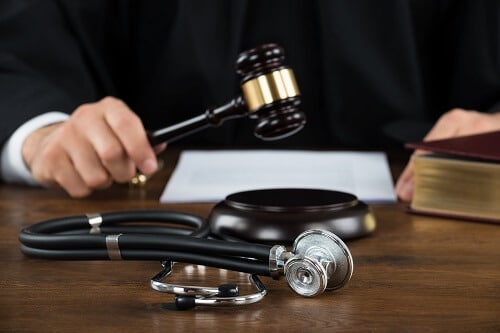Types of Damages: Compensatory, Punitive, and Nominal
In the realm of legal proceedings, particularly within the context of civil litigation, understanding the types of damages that can be awarded is crucial for both plaintiffs and defendants. The recovery process often revolves around three primary categories of damages: compensatory, punitive, and nominal. Each serves a distinct purpose in addressing the harm suffered by a plaintiff and ensuring justice is served.
Compensatory damages are designed to make the injured party whole again. These damages aim to reimburse the plaintiff for actual losses incurred as a result of the defendant's actions. Compensatory damages can be further divided into two subcategories: economic and non-economic damages. Economic damages cover tangible losses such as medical expenses, lost wages, and property damage. Non-economic damages, on the other hand, address intangible harms like pain and suffering, emotional distress, and loss of enjoyment of life. By compensating for these losses, courts strive to restore the plaintiff to their original position before the wrongful act occurred.
Punitive damages serve a different function altogether; they are not intended to compensate the victim but rather to punish the wrongdoer for particularly egregious behavior and deter similar conduct in the future. Awarded in cases where the defendant's actions are found to be malicious or recklessly indifferent to others' rights, punitive damages send a strong message that such conduct will not be tolerated by society. While they are less common than compensatory damages due to their punitive nature requiring clear evidence of misconduct beyond mere negligence or accident, they play an essential role in upholding moral standards within legal systems.
Nominal damages may appear modest in comparison but carry significant symbolic weight. Awarded when a legal wrong has occurred without substantial loss or injury being demonstrated by the plaintiff, nominal damages recognize that a breach of rights took place even if no quantifiable harm resulted from it. This type often involves token sums-sometimes as little as one dollar-but underscores important principles about rights violations needing acknowledgment regardless of material impact.
The complex interplay between these types ensures that justice is tailored appropriately according to each case's specifics while reinforcing societal norms concerning accountability and recompense for wrongdoing. Through careful consideration during litigation processes involving damage recovery claims-whether focusing primarily on compensation restoration via economic means or implementing deterrents against egregious acts through punitive measures-courts endeavor toward fair resolutions aligned with broader ethical frameworks governing human interactions under law's purview.
In conclusion then: understanding how compensatory (focusing chiefly upon rectifying tangible/intangible impacts), punitive (aiming at deterrents against severe misconduct), alongside nominal (emphasizing recognition over materiality) contribute collectively towards achieving equitable outcomes remains fundamental knowledge within any comprehensive examination surrounding damage recoveries processes today!
Legal Framework: Key Laws and Regulations Governing Damages Recovery
The legal framework governing the recovery of damages is a complex and nuanced system designed to ensure that injured parties can receive appropriate compensation for their losses. This framework is built upon a variety of laws and regulations, each contributing to the overall structure that dictates how damages are assessed, claimed, and awarded.
At the heart of this framework are tort laws, which form the foundation for most private injury claims. Tort law is based on principles of negligence, intentional harm, and strict liability. Negligence involves failing to exercise reasonable care to prevent foreseeable harm, while intentional torts involve deliberate actions that cause damage. Strict liability applies in cases where responsibility can be assigned without fault, such as with defective products or inherently dangerous activities. These elements collectively establish the grounds upon which a claimant can seek damages.
Contract law also plays a crucial role in damages recovery. When breaches occur in contractual agreements, affected parties may claim compensatory damages to cover losses directly resulting from the breach. The intent here is to restore the injured party as closely as possible to the position they would have been in had the contract been fulfilled as agreed.
Moreover, statutory laws provide specific guidance on certain types of damages recovery processes. For instance, consumer protection statutes often include provisions for recovering damages caused by unfair or deceptive business practices. Similarly, employment laws may allow for damages related to wrongful termination or workplace discrimination.
Federal and state regulations further refine this legal landscape by establishing specific procedures and limitations regarding claims. For example, statutes of limitations dictate timeframes within which claims must be filed; failing to do so can result in forfeiture of rights to recover damages. Caps on certain types of damages-such as punitive or non-economic damages-are also frequently outlined in these regulations.
In addition to these foundational components, judicial precedents play an influential role in shaping how laws are interpreted and applied in real-world scenarios. Courts interpret statutes and assess case specifics based on prior rulings, thereby creating a body of case law that guides future legal proceedings involving similar issues.
Finally, alternative dispute resolution methods like mediation and arbitration offer pathways outside traditional court litigation for resolving disputes over damage recovery efficiently and amicably. These mechanisms often provide quicker resolutions while being cost-effective compared to prolonged litigation processes.
Overall, understanding the interplay between these various elements-the statutory provisions, judicial interpretations, procedural rules-and their application requires careful navigation by both claimants seeking justice through damage awards and defendants aiming to mitigate potential liabilities. It highlights not only how integral this framework is but also its dynamic nature reflecting societal values concerning fairness and accountability within civil justice systems worldwide.
Steps in the Damages Recovery Process: Filing a Claim and Gathering Evidence
The journey through the damages recovery process is often complex and daunting, requiring meticulous attention to detail and a strategic approach. At the heart of this process are two crucial steps: filing a claim and gathering evidence. These foundational elements set the stage for a successful outcome, enabling individuals or entities to secure fair compensation for their losses.
Filing a claim is the initial official step in seeking damages. This process involves formally notifying the responsible party or their insurance company of your intent to pursue compensation for injuries or losses suffered due to their actions or negligence. The importance of this step cannot be overstated, as it essentially serves as the formal introduction of your case into the legal system or insurance framework.
When preparing to file a claim, it is imperative to ensure that all required documents are complete and accurate. This includes providing personal details, outlining the nature of the incident, specifying the type and extent of damages incurred, and clearly indicating any financial compensation sought. An incomplete or inaccurate claim can lead to delays or even outright denial. Therefore, careful preparation at this juncture lays a solid foundation for subsequent stages in the recovery process.
Simultaneously, gathering evidence becomes an essential parallel task that supports and strengthens your claim. The quality and comprehensiveness of evidence collected can significantly influence the likelihood of achieving favorable results. Evidence may take various forms depending on the nature of damages being claimed; these could include photographs from an accident scene, medical reports detailing injuries sustained, repair estimates for damaged property, witness statements corroborating your account, or any relevant records that substantiate financial losses.
Effective evidence gathering demands diligence and precision. It requires not only collecting but also organizing information in a coherent manner that clearly illustrates how damages occurred and why compensation is justified. For instance, maintaining a chronological record of events alongside corresponding documentation can help create an indisputable narrative supporting your claim.
Moreover, securing professional assistance might prove beneficial at this stage-engaging with legal advisors or claims specialists who possess expertise in navigating complex cases ensures that no critical piece of evidence is overlooked while enhancing overall credibility with insurers or adjudicators.
In conclusion, filing a claim coupled with robust evidence gathering forms an indispensable foundation within the damages recovery process. Together they constructively advance one's pursuit towards obtaining rightful compensation by articulating clear grievances backed by compelling proof-thereby transforming what initially appears as mere assertions into undeniable facts warranting redressal under prevailing laws or policies governing liability claims procedures today.
Role of Legal Representation: Importance of Hiring an Attorney
In the intricate tapestry of the legal world, where complexities abound and stakes are high, the role of legal representation stands as a pillar of justice and fairness. This is especially true in the context of damages recovery-a process that can be fraught with challenges and laden with intricacies. The importance of hiring an attorney in navigating this terrain cannot be overstated, as their expertise serves as both a shield and a compass for those seeking redress.
At its core, the damages recovery process is designed to compensate individuals for losses or injuries suffered due to another party's negligence or wrongdoing. However, transforming this theoretical entitlement into tangible reality is far from straightforward. Legal representation becomes crucial at this juncture because attorneys possess the specialized knowledge required to interpret and apply complex laws that govern damages recovery. Without their guidance, claimants may find themselves lost amidst statutory nuances and procedural labyrinths.
One of the primary roles of an attorney in this process is to assess the value of a claim accurately. Determining appropriate compensation involves more than just calculating medical bills or property damage; it requires a comprehensive understanding of various factors such as pain and suffering, loss of future earnings, and potential long-term impacts. Attorneys employ their experience to quantify these elements effectively, ensuring that clients receive fair compensation reflective of their true losses.
Furthermore, attorneys play an essential role in gathering evidence and building a compelling case. This involves meticulous investigation-collecting medical records, accident reports, witness statements, and expert testimonies-all while adhering to strict legal standards. An adept attorney knows how to craft a persuasive narrative that highlights the extent of harm suffered by their client while demonstrating liability on the part of the opposing party.
The courtroom environment itself poses another layer of complexity where having legal representation becomes indispensable. Navigating court procedures demands not only familiarity with rules but also strategic acumen in presenting arguments persuasively before judges or juries. Attorneys are trained advocates who understand how best to articulate claims within formal settings while countering any defenses put forth by opposing counsel.
Moreover, many cases do not reach trial but instead end through negotiations or settlements outside courtrooms-a domain where skilled negotiators thrive most prominently among seasoned attorneys who advocate tirelessly for favorable outcomes for their clients without compromising on justice principles.
Finally yet importantly lies peace-of-mind factor associated when engaging professional help during trying times like pursuing damage recoveries post-injury/incident scenarios - knowing someone knowledgeable has your back allows focus shift towards healing rather than worrying over technicalities involved therein providing much-needed emotional relief too besides financial restitution sought after via litigations handled expertly well thanks largely indeed due diligence exercised astutely every step along way courtesy competent lawyer retained wisely beforehand itself!
In conclusion then: Hiring an attorney isn't merely about seeking assistance; it epitomizes proactive empowerment aimed securing rightful entitlements legally enshrined under prevailing jurisprudence pertaining specifically herein addressed topic i.e., Damages Recovery Process wherein Role Legal Representation assumes paramount significance thereby making imperative necessity rather optional luxury worth considering seriously anyone embarking upon journey reclaim what's rightfully theirs!
Settlement Negotiations: Strategies for Reaching a Resolution
Settlement negotiations in the context of damages recovery are a critical component of the legal process, allowing parties to resolve disputes without resorting to lengthy and expensive litigation. These negotiations require careful strategizing, empathy, and a clear understanding of both parties' interests and limitations. Effective settlement negotiations can save time, reduce costs, and provide more control over the outcome for all involved.
At the heart of successful settlement negotiations is preparation. Before entering discussions, it is important for each party to thoroughly understand their own case, including the strengths and weaknesses. This involves gathering all relevant documentation, understanding legal precedents, and calculating potential damages accurately. Knowing your best alternative to a negotiated agreement (BATNA) is crucial; this knowledge provides leverage during negotiations by clearly defining what you are willing to accept as a minimum settlement.
Equally important is understanding the perspective of the opposing party. Recognizing their motivations and constraints allows for more effective communication. Empathy plays a significant role here; by acknowledging the other party's concerns and desires, negotiators can foster an atmosphere of mutual respect that often leads to more amicable resolutions.
Developing a strategy based on realistic objectives is another key aspect of successful settlement negotiations. Setting clear goals helps maintain focus during discussions and prevents being swayed by tactics such as high-pressure demands or emotional appeals from the opposing side. It is also beneficial to identify areas where flexibility might be possible; sometimes concessions in less critical areas can lead to gains in others that are more valuable.
Communication skills cannot be overstated in their importance during settlement negotiations. Being able to articulate your position clearly while actively listening to the other side ensures that misunderstandings are minimized and constructive dialogue can occur. Furthermore, maintaining professionalism at all times helps build credibility with mediators or judges who may be overseeing proceedings.
A strategic approach often involves exploring creative solutions that may not have been initially considered by either party. This could involve proposing alternative forms of compensation or agreeing on future actions that benefit both sides beyond mere monetary settlements.
Finally, patience is vital throughout this process; rushing towards an agreement just for expediency's sake can lead to unfavorable terms or overlooked details which could cause issues later on. Taking time ensures all aspects of the resolution are thoroughly vetted before finalization.
In conclusion, reaching a resolution through settlement negotiation requires meticulous preparation, empathy towards opposing viewpoints, strategic planning with clearly defined objectives, strong communication skills coupled with professionalism, openness to creative solutions beyond traditional approaches-and above all else-patience. By meticulously adhering to these strategies within damages recovery contexts while staying focused on fair outcomes for everyone involved will most likely result in satisfactory settlements benefiting all parties concerned along every step taken together throughout this delicate yet rewarding endeavor .
Going to Trial: Court Procedures and What to Expect
Going to trial, particularly in the context of damages recovery, is a significant step in the legal process that can be both daunting and intricate. Understanding the court procedures and what to expect can ease some of the anxiety associated with this journey. In essence, damages recovery involves seeking financial compensation for losses or injuries sustained due to another party's actions or negligence. When settlement negotiations fail, proceeding to trial becomes necessary.
The trial process begins with the filing of a lawsuit. Once a complaint is filed, it sets forth the allegations and the specific damages being sought. The defendant then responds with an answer, either admitting or denying the claims. This exchange marks the beginning of the pre-trial phase where discovery takes place-a critical stage involving the exchange of evidence between parties. During discovery, depositions, interrogatories, and requests for documents are common tools used by both sides to gather pertinent information.
As preparations advance towards trial, both parties engage in pre-trial motions designed to resolve procedural issues and set ground rules for how the trial will be conducted. These motions can include requests to exclude certain evidence or even attempts to dismiss parts of the case entirely.
When it comes time for trial, understanding courtroom etiquette and procedure is essential. The process typically starts with jury selection-if applicable-followed by opening statements from each party's legal representatives. These statements outline their respective arguments and set expectations on what they intend to prove.
The heart of any trial is in presenting evidence through witnesses' testimonies and exhibits like documents or physical objects that support each party's claims or defenses. Both sides have opportunities for direct examination (questioning their own witnesses) and cross-examination (challenging opposing witnesses). This back-and-forth aims not only at establishing facts but also at undermining credibility where possible.
After all evidence has been presented, closing arguments offer lawyers a chance to summarize their cases persuasively one last time before deliberations begin. If a jury is present, they will receive instructions from the judge about how they should apply law principles when reaching their verdict concerning liability and damage awards.
Once a verdict is reached-or if it's a bench trial where judges decide-the focus shifts toward determining appropriate damages if liability was established in favor of plaintiffs seeking compensation. Damages may cover medical expenses incurred due to injury; loss wages; pain suffering; emotional distress among others depending on jurisdiction laws governing these matters.
It's important throughout this entire process-from initial steps through final judgment-that individuals pursuing such claims remain patient yet proactive alongside competent legal counsel who understands nuances involved within particular contexts surrounding specific cases at hand ensuring equitable outcomes achieved wherever possible given circumstances presented therein overall framework judicial system operates under today still ever evolving meet contemporary needs society faces now future alike thus making sure justice served fair transparent manner benefiting all stakeholders involved ultimately better result achieved long term basis regardless outcome specific instances occurring along way path traveled together united common purpose fairness equality truth justice itself guiding light illuminating direction forward always remembered respected upheld highest regard continually strive make happen reality everyday lives touched affected processes described hereinabove shared collectively valued cherished deeply meaningful ways beyond mere words express themselves alone suffice capture fully essence truly represents us whole humanity larger sense connectedness belonging shared aspirations dreams hopes aspirations goals lived experienced uniquely individually yet universally simultaneously harmoniously together forevermore timelessly enduringly beautifully powerfully poignantly infinitely wondrously inspiringly eternally so forth ad infinitum amen hallelujah amen indeed!
Post-Trial Actions: Collecting Awarded Damages and Enforcement
In the realm of legal disputes and courtroom battles, a favorable verdict is often seen as a significant victory for the prevailing party. However, winning a lawsuit does not immediately translate into tangible benefits, especially when monetary damages are awarded. The journey from obtaining a court judgment to actually receiving compensation can be complex and fraught with challenges. This process, known as post-trial actions for collecting awarded damages and enforcement, is an essential aspect of the damages recovery process.
When a court awards damages to a plaintiff, it essentially recognizes that harm has been done and assigns a monetary value to that harm. But unlike in movies where victorious parties walk away with checks in hand, reality demands further action to secure those funds. The defendant may not always willingly pay the awarded sum, necessitating proactive measures to enforce the judgment.
The first step in this post-trial phase is usually what is known as "judgment entry." This involves formally entering the court's decision into official records, making it an enforceable order. Once this step is completed, the plaintiff becomes a judgment creditor, while the defendant is termed a judgment debtor. As straightforward as it sounds, this transition from verdict to recorded judgment can sometimes involve legal maneuvering if the defendant seeks appeals or files motions to alter or vacate the judgment.
Assuming there are no appeals or once all appellate avenues have been exhausted, enforcement comes into play. Enforcement mechanisms vary by jurisdiction but generally include several options aimed at compelling payment from unwilling debtors. One common method is wage garnishment, where a portion of the debtor's income is directly diverted to satisfy the judgment debt. Another approach could be levying bank accounts or placing liens on property owned by the debtor.
However, these methods require detailed knowledge of both state laws and federal regulations governing debt collection practices. For instance, certain states have specific exemptions protecting portions of wages or types of property from being seized. Therefore, navigating these legal waters often necessitates skilled attorneys or collection agencies specializing in judgment enforcement.
Moreover, identifying assets owned by the debtor can be an intricate task in itself. Debtors might attempt to shield their assets through transfers or concealment tactics designed to frustrate collection efforts. Thus, conducting thorough asset searches becomes crucial for effective recovery.
Beyond technicalities and procedural steps lies another layer: negotiation and settlement discussions post-judgment. Sometimes parties reach out-of-court agreements even after trial outcomes-perhaps agreeing on structured payment plans rather than lump-sum payments-especially if immediate full payment proves impractical due to financial circumstances faced by defendants.
It's also worth noting that time plays an essential role here; judgments have expiration dates unless renewed periodically according to applicable statutes-typically ranging between five and twenty years depending on jurisdictions-which means continuous vigilance by creditors until full satisfaction occurs might be necessary.
Ultimately though arduous at times-the pursuit towards actualizing justice remains paramount within our judicial systems; ensuring not only rightful recognition but realization too! Collecting awarded damages stands testament showcasing perseverance amidst complexities inherent within post-trial realms thereby affirming faith upon due processes established therein safeguarding aggrieved parties' interests rightfully adjudicated!





